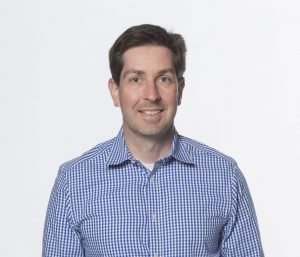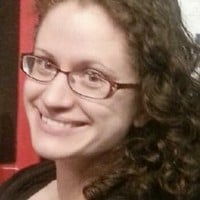In this edition of our Admissions Director Q&A, Bruce DelMonico, the Assistant Dean for Admissions at the Yale School of Management, joins us to discuss the leading MBA program. He started at Yale SOM, which is based in New Haven, Connecticut, in October 2004 and has led the Admissions Office since November 2006. Before Yale, Bruce was an attorney focused on First Amendment, white collar, and commercial litigation.
Yale SOM is known for its small class size (typically around 350 new students join the program each year) and integrated curriculum. Below, DelMonico digs into the curricular structure, what to expect in admissions, how interviews are conducted and more.
Clear Admit: What is the one aspect of your program that you wish applicants knew more about?

Bruce DelMonico: There are many aspects of the program that I wish applicants knew more about–our mission-oriented approach to management; our innovative integrated curriculum; our strength in a host of academic disciplines, from finance and strategy to healthcare and the environment–but I will focus on our distinctive “raw case” approach to the classroom experience. At Yale SOM, our core classes are roughly 50-60% taught by the case method. But these cases, which we call raw cases, are developed by our own Yale case-writing team. We call them raw cases because unlike “cooked” cases at other schools, where the relevant material is boiled down for you to a 10-12 page document that eliminates all extraneous facts, raw cases present all the primary source material you would encounter in your actual professional life. The idea is that it is a skill–and a crucial one at that–to wade through this material and be able to understand what’s relevant and resolve inconsistent or incomplete information. This is a real-world skill that it takes time and effort to develop, and we enable you to do so through our curricular structure. I think that raw cases exemplify the thoughtfulness of what we do at Yale and how we’re trying to help our students develop practical skills–even in the classroom setting–that will prepare them to be more effective leaders after they graduate than they otherwise would be.
CA: How might the applicant experience look different this year due to COVID-19? How would you advise candidates to get to know your MBA program and student community if they aren’t able to visit your campus?
BD: This application season will invariably be unusual in a number of ways! My sense is that the prospective student experience will be more affected than the applicant experience. To be sure, it’s likely that for the first application round at very least, we will be conducting interviews by Zoom and that there will not be the opportunity for applicants to interview in person. But my hope is that the rest of the application process will be largely unaffected by the pandemic. The process itself is largely the same as in past years, as are the application deadlines (starting with our Round 1 deadline on September 15).
For prospective applicants, however, the change will be more dramatic–there will not be the opportunity to meet admissions officers, students, and alumni at recruiting events or here on campus, nor will there be the opportunity to sit in on classes, tour SOM and the University, or do any number of other things to learn more about the program and our community. To compensate, we and other schools have really built out our portfolio of online resources and are thinking of how to translate elements of our existing outreach (e.g., campus tours and classroom visits) to the virtual context, and are also thinking of how to create new ways to engage with us remotely. I would advise prospective students to visit our website to find different opportunities to engage with our community.
CA: Walk us through the life of an application in your office from an operational standpoint. What happens between the time an applicant clicks “submit” and the time the committee offers a final decision (e.g. how many “reads” does it get, how long is each “read,” who reads it, does the committee convene to discuss it as a group, etc.)?
BD: Once the application deadline has passed (we do not begin to review applications until after the deadline), we get together as a committee to take a quick look at the entire pool, level-set, and triage. We will then begin to review files and start to send out interview invitations. Each file is reviewed by at least two different members of our admissions committee, which consists of a dozen admissions officers plus three to four outside readers (including former admissions officers) who have been with us for several years. Files can take different amounts of time to review, but it can be as much as 30 minutes or even more. A subset of the committee will make decisions on who to interview, and then once the interview is complete the applicant will come before the full committee for a decision.
CA: How does your team approach the essay portion of the application specifically? What are you looking for as you read the essays? Are there common mistakes that applicants should try to avoid? What is one key thing they should keep in mind as they sit down to write?
BD: Our essay prompt is short and direct–“Describe your biggest commitment”–but it is by no means simple. We developed it in partnership with Amy Wrzesniewski, a professor in our organizational behavior group who has worked with us (along with other faculty) over the years on various aspects of our admissions process. With Professor Wrzesniewski’s help, we have put together a very structured rubric for how we evaluate the essay and how it integrates into our overall application review. I can tell you that we care less about the specific commitment you choose to write about–we are not making value judgments about what is and is not a worthy commitment–and more about what behaviors you can point to that evidence the commitment. The commitment can be either personal or professional–again, no judgment; applicants have written successful essays in both realms. The key is how you demonstrate the commitment, not what the commitment is. And I can say that one big mistake is when people try to fit everything about their candidacy, including why they want to come to Yale for their MBA, into the essay. The essay is one component of the overall application, and we have built the application so that each element seeks out a different, complementary aspect of your profile so that when brought together the overall application gives us a full picture of your candidacy. The essay is just one piece of the puzzle; don’t feel as though you have to say everything there!
CA: Could you tell us about your interview process? Approximately how many applicants do you interview? Who conducts the interview (students, admissions officers, alumni) and what is the nature of the interview?
BD: Of course! In a typical year, we will interview roughly a quarter to a third of our applicants. An interview is required for admission to the program–you cannot be admitted without one, but not being interviewed does not mean you will be denied (we waitlist a decent number of people each year without an interview, and some of them will be interviewed and admitted later in the application season). Most of our interviews are conducted by trained second-year students. We work with experts in Yale College and here at SOM to teach our students best practices for how to interview, how to minimize bias, and other important aspects of the process. Our interviews are structured behavioral interviews, which is shown to heighten their predictive validity. Interviews are blind–the interviewer has seen the applicant’s resume, but not the rest of their application. We want the interview to be as independent as possible, not influenced by the rest of the candidacy.
CA: Tell us briefly about two notable professors at your institution (ideally one student favorite, and one up-and-coming).
BD: There are many people I could point to here. Two names that come to mind are Bob Shiller and Tristan Botelho. I include Bob Shiller because, even though he’s a Nobel Prize-winning economist, he’s still in the classroom and meeting with students and very visible at the school. And Tristan Botelho is an up-and-coming member of our Organizational Behavior group. His teaching focuses on entrepreneurship, and he is widely praised both for his manner and engagement in the classroom and the way he cares about students outside the classroom.
CA: Anything else you’d like to highlight about your MBA program or admissions process?
BD: I’d like to talk briefly about a distinctive element of our application, the Behavioral Assessment. Though we have spent several years developing the Behavioral Assessment for use in the admissions process, last year was the first time we included it as a required component for all our applicants. The assessment is unique among business school applications, and supports our ongoing efforts to create a community of broadminded, intellectually curious students who represent a diversity of backgrounds and interests. Specifically, it allows us to look beyond traditional metrics such as standardized testing and academic performance to better predict who will thrive in the Yale SOM classroom. We are excited to continue our use of this tool in the coming year, and we hope you’ll find the experience of taking the assessment to be a straightforward (and maybe even enjoyable) one! The test itself is a forced-choice module, in which you are given 120 pairs of statements and you have to choose the statement that is more like your own behavior. While you may, at times, feel that neither of the two answers you are presented with is a perfect fit, rest assured that no one response will determine your results. Just choose the one that fits best and move on to the next question.






